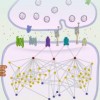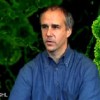connolly
This user hasn't shared any biographical information
Posts by connolly

The Autism-Vaccine Link and Trusting Science
Feb 8th
Almost twelve years after its original publication, The Lancet medical journal has formally retracted the infamous paper by Andrew Wakefield and colleagues that had posited a link between vaccines and autism. This follows a partial retraction in 2004, and succeeds the stern judgment by the UK General Medical Council’s Fitness to Practise Panel “that several elements of the 1998 paper by Wakefield et. al. are incorrect, contrary to the findings of an earlier investigation.”
So that finally puts the autism-vaccination link to bed, right? Wrong. To read some responses in the blogosphere, one could assume that The Lancet had declared war on all More >

New Technique may Unravel Secrets of Biochemistry
Jan 11th
A new paper from David Kleinfeld’s Laboratory at UC San Diego details an exciting new technique for studying biochemistry in the brain. The paper, published in the journal Nature Neuroscience, outlines a novel method for studying cell-to-cell signals that are the basis of neurotransmission. It has significant potential for uncovering the mechanisms by which many psychiatric drugs work.
What did the group find? Kleinfeld’s group devised a technique that uses elaborately-named “cell-based neurotransmitter fluorescent engineered reporters” (CNiFERs for short) to examine how neurotransmitter receptors are activated. CNiFERs are cells that have been engineered to change color when acted upon by a specific neurotransmitter. More >

Name that star!
Dec 14th
A good friend of mine recently gave birth to a beautiful baby girl. In searching for an appropriate gift, I came across a book by Michael Sherrod and Matthew Rayback called Bad Baby Names. The book trawls through 40 years of U.S. census data to catalog some of the most disastrous names bestowed upon American children. Examples include Acne Fountain, Emma Royd, Fanny Pack, Nice Carr, and Post Office.
Many hours of belly laughs later and I began to feel rather guilty. How terrible it must be to labor through life as Super Mann. How the schoolyard must cackle when Garage More >

Your teacher was wrong!
Nov 12th
I studied neuroscience in college and subsequently taught it for three years at university. One of the central tenants of the course I studied and taught was the dogma of synaptic transmission. The basic tenant of this dogma is that neurons communicate exclusively by sending chemical signals across the synaptic cleft. Pretty much every neuroscience textbook ever written is filled with this idea. It turns out that this is not actually the whole truth. To communicate, brain cells do not need a synapse at all!
This is the surprising news from a team of researchers are the University of Szeged, Hungary. More >

White Matter Matters!
Oct 19th
Can you change the structure of your brain with practice? A slew of papers in the last decade affirm that yes, you very much can. Probably the best known is a study by Maguire and colleagues, who found structural differences in the hippocampi of London taxi drivers — presumably the result of having to learn London’s 25,000 streets. [We turned the Maguire et al. study into an online experiment, which you can play here].
To date, every study that identified practice-related changes in brain structure located these changes in grey matter. Now, for the first time, a paper by Scholz and colleagues More >

Ribosome Discoveries Recognized in 2009 Nobel Prize in Chemistry
Oct 7th
The 2009 Nobel Prize in Chemistry will be shared between Venkatraman Ramakrishnan, Thomas A. Steitz and Ada E. Yonath for discovering how ribosomes function at the atomic level.
Ribosomes are molecular machines composed of RNA and protein that perform the critical function of translating messenger RNA (mRNA) into protein. In other words, they transform the genetic code from a static list of instructions into dynamic entities that constitute life. As the Nobel Foundation’s announcement eloquently put it, “they build and control life at the chemical level.”
In a tour-de-force of atomic chemistry, Ramakrishnan, Steitz, and Yonath used X-ray crystallography to locate each More >

2009 Nobel Prize in Physics goes to Kao, Smith and Boyle
Oct 6th
Telecommunications were the subject of the 2009 Nobel Prize in Physics. This year’s award will be split between two discoveries that have had a broad impact on contemporary life – fiber optics and charge-coupled device (CCD) technology.
Charles Kuen Kao will receive half the Prize for laying the foundations of the modern fiber optic industry. In 1966, he calculated how to transmit light signals over long distances using glass fibers. To that point, traditional materials had only been capable of transmitting signals over short distances (i.e. 50 feet). Kao’s discovery demonstrated how to send signals over many miles. Four years later, More >

Defining the Enemy, Advances in Autsim Research
Oct 5th
For most people the ideas of genes and traits recall a few scattered facts from their primary schooling on Mendel and his pea plants; short ones, tall ones, Punnett squares and the like. When it comes it comes to simple traits, like eye color, people may think that it is only a matter of some combination of dominant or recessive genes, i.e. BB, Bb, or bb. As it turns out, eye color is more genetically complex than this. So one could imagine that solving the genetic mysteries behind autism are even more complex.
In a recent review of autism research, Brent More >

Blackburn, Greider and Szostak share Nobel for Telomeres
Oct 5th
Nobel Prize week kicked-off today with the announcement of the Prize in Physiology or Medicine. As predicted on these pages, Elizabeth Blackburn, Carol Greider, and Jack Szostak shared the award for discovering telomeres and telomerase. This is particularly good news for Cold Spring Harbor Laboratory, which was home to Carol Greider when she made the pivotal discovery of isolating the RNA gene that encodes for the telomeric template.
Carol Greider isolated the Telomeric Gene while at Cold Spring Harbor Lab
What is a Telomere? A telomere is a region (or cap) of repetitive DNA at the end of every chromosome that basically More >

Countdown to the 2009 Nobel Prizes…
Oct 1st
Nobel Prize week will kick-off on Monday (October 5th) with the announcement of the Prize in Physiology or Medicine. The prizes for Physics and Chemistry will follow on successive days, as the science world is treated to its annual brush with celebrity. Unlike the Oscars, however, we do not know the list of nominees and the whole election process is rather secretive. Deprived as we are of a list of formal candidates, I think it best to resort to wild speculation, conjecture, and rumor.
Physiology and Medicine…
The main contenders: Elizabeth Blackburn, Carol Greider, and (possibly) Jack Szostak The discovery: Telomeres and telomerase More >
